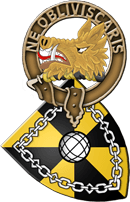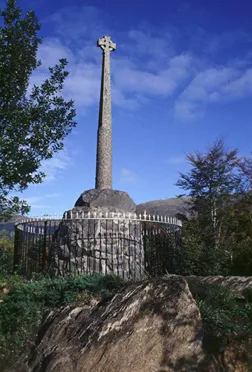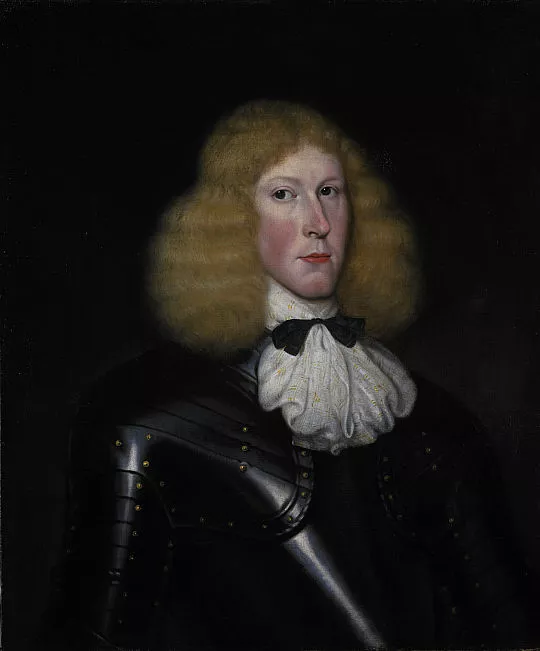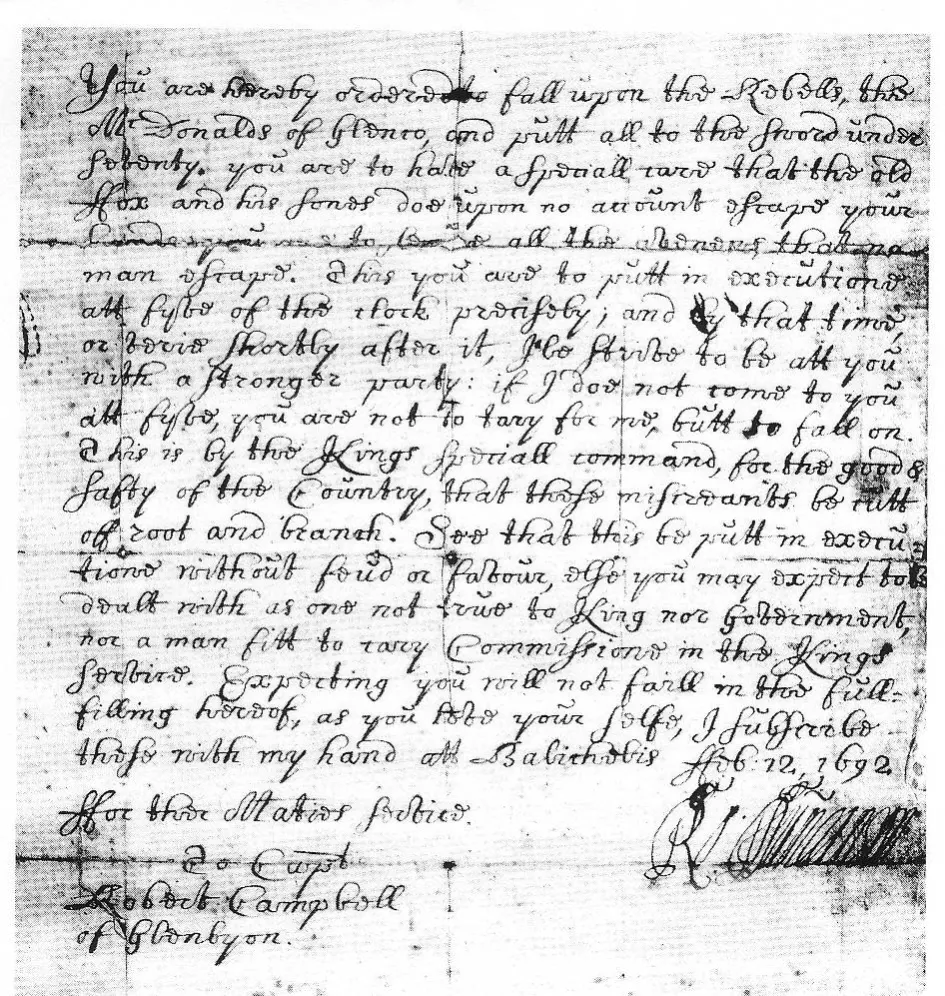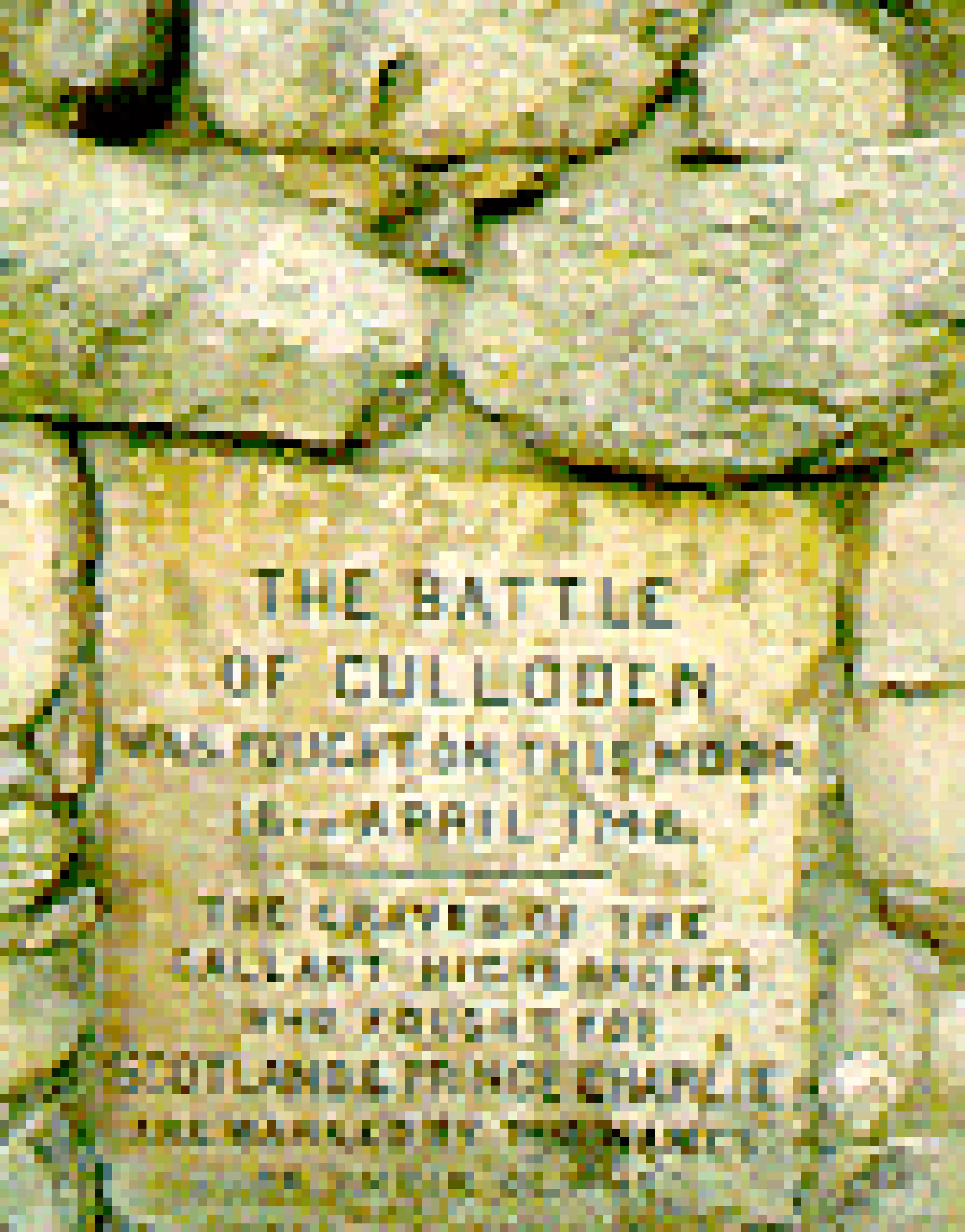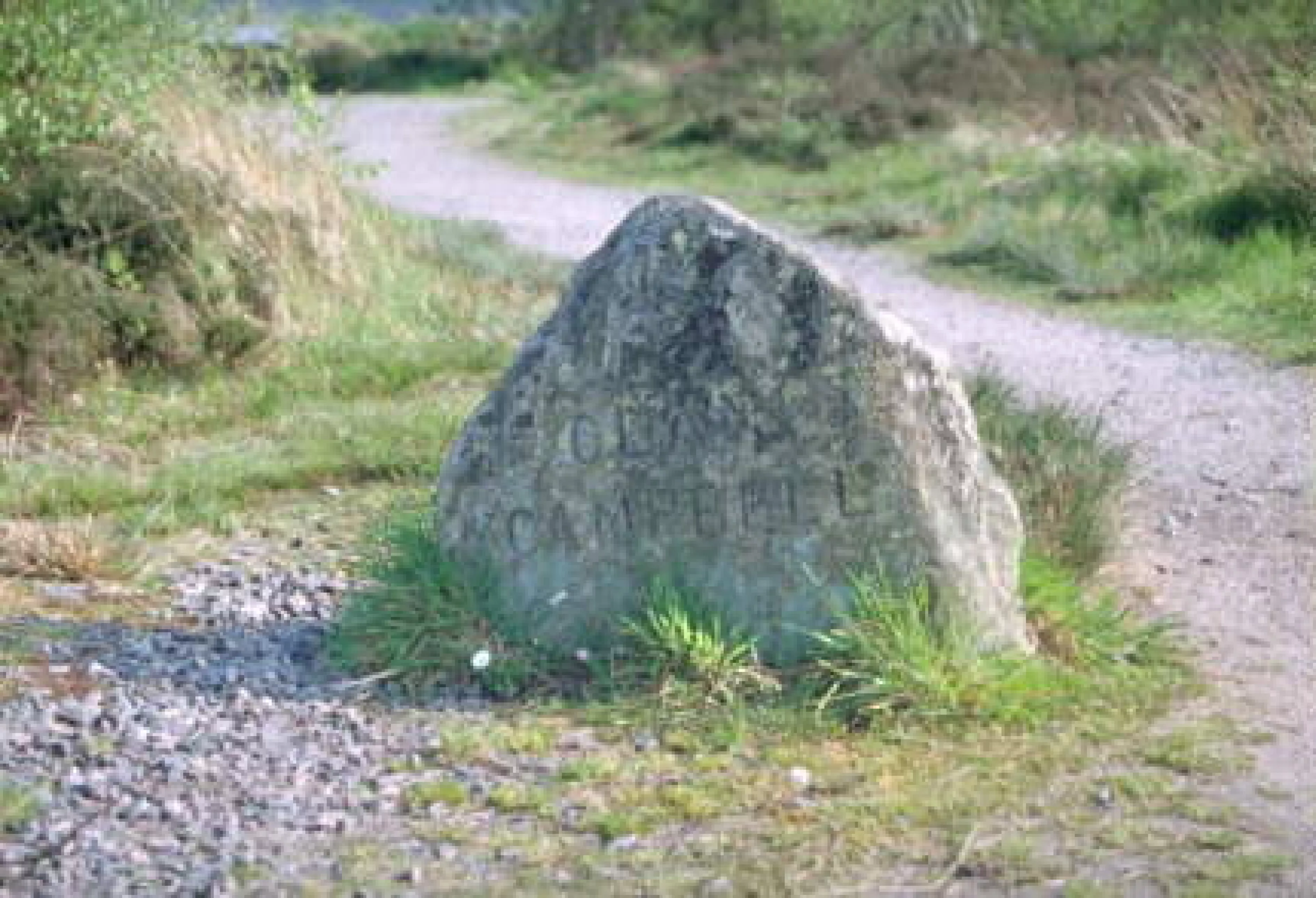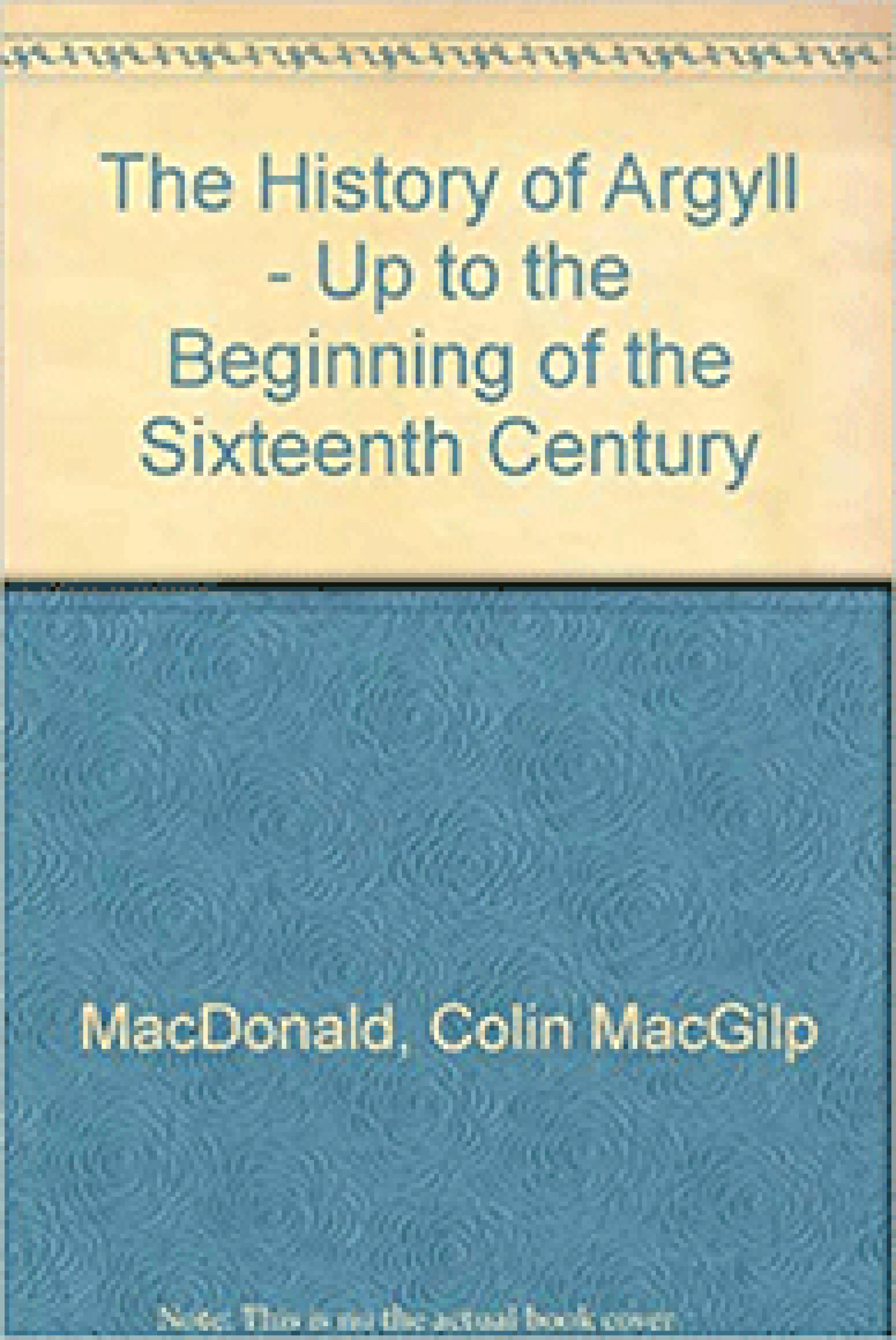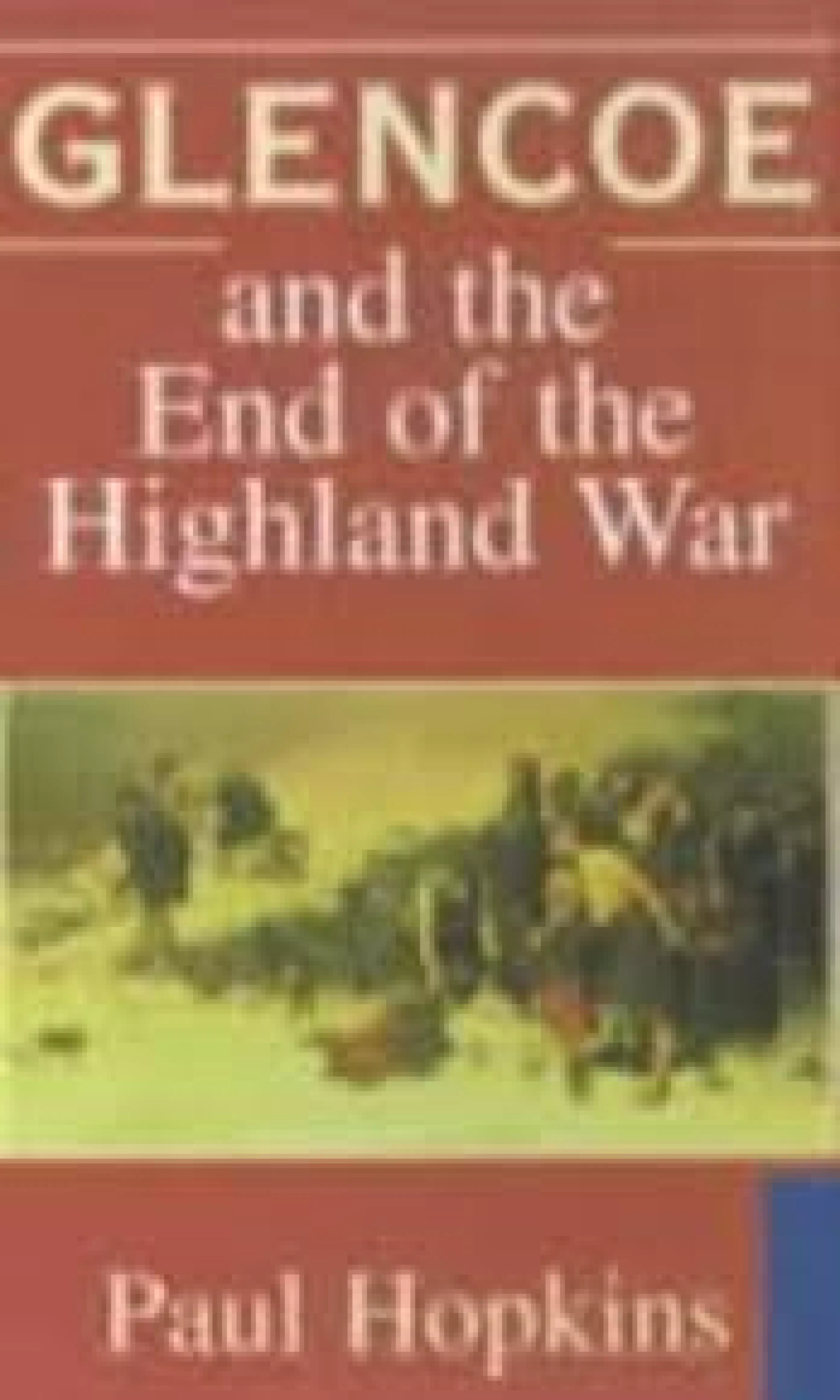- THEIR DIFFERENT ROLES
- DIFFERENCES AND SIMILARITIES
- TWO CLANS EMERGE IN ARGYLL
- THE LORDS OF THE ISLES
- CLAN DONALD LOSS, CLAN CAMPBELL GAIN
- THE MASSACRE OF GLENCOE IN 1692
- SOME UNEXPECTED INCIDENTS: CLAN CAMPBELL AND CLAN DONALD
- IN CONCLUSION
THEIR DIFFERENT ROLES
As the Campbells and the MacDonalds began to develop into Clans in Argyll during the 13th century, the two families intermarried. By the beginning of the 14th century, most of them were allies in support of Robert the Bruce in his fight to win the throne and clear Scotland of English influence.
It was in 1263-1266 that the King of Scots regained control of the western isles from the King of Norway. So the island of Islay, the eventual seat of Clan Donald power, had for many years been outside the domain of the Kings of Scots. No doubt this led to the tendency of the leaders of Clan Donald to see themselves as independent rulers and, as such, often opposed to the Kings of Scots.
The Campbells, on the other hand, perhaps even from the first establishment of their ancestors on Lochawe in Argyll in the early twelve hundreds, appear to have grasped their role of upholding of the royal writ in the west. The consistency with which they persued this end was remarkable - reinforced in their loyalty to the crown by early marriages with the royal family. Only with the Reformation of 1560 did their vision for a Protestant Scotland sometimes lead them to diverge from loyalty to those members of the Royal House who showed a tendency towards a return to Catholicism.
This contrast - between the independent tendencies of some leaders of Clan Donald and the consistency of the Chiefs of Clan Campbell in extending and upholding the royal influence in the west - lay at the root of their differences. In the 14th and 15th centuries the prize of their increasing rivalry became what was known as 'the Headship of the Gael.'
The differing policies of the Campbell and MacDonald chiefs, based upon their relationships to the kings of Scots, meant that conflict was inevitable. To some extent this very conflict and the need to have loyal followers, was what brought about the swift development and great peaks of power for the two clans.
DIFFERENCES AND SIMILARITIES
Some would like to see the reason for the differences between Clan Campbell and Clan Donald as racial and ideological. The ancestors of the Campbells were of the Britonic Celts who intermarried with the Celtic Gaels or Scots, whereas the ancestors of Clan Donald were Celtic Gaels or Scots who intermarried with the Norse and Vikings. Hardly a very great difference considering that both also inter-married with each other.
The basis for the power of Clan Campbell was built upon loyalty to the Kings of Scots which originated in a kinship to the Celtic forebears of Robert the Bruce. When the Stewart kings came to power, this Campbell loyalty was further cemented by chiefly marriages to daughters of the royal house.
The rise to power of both clans was the result of their support of Robert the Bruce in his bid for the Scottish throne. After the Battle of the Pass of Brander in 1308-09, both emerging clans gained from the downfall of the MacDougall Lords of Argyll (or de Eragadia) who were the senior cousins of the MacDonalds.
The basis of power of Clan Donald was originally built by their great progenitor, Somerled, in the 12th century. He wrested the Isles from the dominance of the Norwegian kings by creating an effective defense force against them. When Somerled died in 1163, his eldest son, Dougall, progenitor of Clan Dougall, was left the heartland of Somerled's kingship in Argyll.
Clan Donald sennachies and writers long attempted to obscure the seniority of Clan Dougall so as to give the impression that Clan Donald were the senior heirs of Somerled. However, 20th century historians have now proven the legitimacy of the Clan Dougall seniority.
Some writers have offered an attempted interpretation which has the Campbells accepting "feudalism" whereas the Donalds held to "the ancient ways of the Gael." Feudalism influenced all Scots in time. Feudalism was based upon the concept of primogeniture where the eldest son succeeds to land and all power and land stems from the king through charters. In Celtic tribal administration, the people believed that they belonged to the land, not that the land belonged to them or their kings. In legal administration, the emphasis was upon reparation rather then prevention. However, the conflicts of the two systems have been over-emphasised in attempting to explain the differences between Clan Campbell and Clan Donald. The laws of Scotland today show surprising traces of Celtic, as opposed to feudal, law.
The Normans were Vikings and Norse who had lived for 150 years in France before invading England in 1066. A historian writing on the Irish mercenaries or "Galloglass" and their relationship to Norse and Vikings in Ireland has pointed out that, in that area, the concept of primogeniture came directly from Scandinavia.
The ancestors of Somerled were Irish and Dalriadic Celts as well as Norse. In Celtic style, Somerled divided his lands between his sons, but he did leave his eldest son, Dougall, the heartland of his kindom.
The traditional marriage of the Cambel ancestor to an O'Duibne heiress on Lochawe in the early 13th century is now generally accepted as fact. Indications are that the O'Duibne were of a Dalriadic rather than a Pictish origin.
The Campbell Chiefs, being geographically nearer and loyal to the crown, were naturally obliged to adopt the aspects of feudalism in order to hold their lands. Yet among the Campbells, the Celtic ways of the Gael, such as fostering, the selection of the succession to the chiefs by tanistry, and the chiefly nurturing of poets and sennachies, all persisted beyond the Middle Ages.
The truth is that, while there were some differences of racial origin or ideology, the two clans had more similarities than differences. The root cause of the conflicts between Campbell and Donald, where they occurred, were in loyalty or dis-loyalty to the Kings of Scots. Both were partly of the blood of the Gael and both were imbued with the culture of the Gael.
TWO CLANS EMERGE IN ARGYLL
When Somerled, the 'regulus' or local ruler of Argyll, died in 1163-64 while invading the lands of the king of Scots, he left most of his Argyll lands to his eldest son, Dougall, ancestor of Clan Dougall. His younger sons, Reginald, and Angus, were left the farther reaches of his island and mainland holdings. Reginald's sons were Donald and Ruari. Donald, progenitor of Clan Donald, inherited southern Kintyre, Islay and the South Isles, while Garmoran to the north of Argyll was left to Ruari.
Donald of Islay died in 1250. Donald had apparently arranged for his son and heir, Angus Mor MacDonald, to marry a daughter of Sir Colin Campbell (Cailein Mor) of Lochawe. Angus Mor's Campbell lady bore him three sons, Alasdair Og, Angus Og and John. Angus Mor was the great-grandson of Somerled while his wife was grand-daughter of Sir Gillespic Cambel. Sir Gillespic held lands both in Argyll and eastern Scotland and his father is said to have been Dugall Mc'Duibne whose nickname 'Caim Beul' gave rise to the Cambel name.
When Angus Mor died between 1292 and 1300, Alasdair inherited Islay and part of Knapdale while Angus Og was left most of Kintyre and a claim to the Isle of Mull, although the latter was still in the hands of their cousins of Clan Dougall. Angus Og, said to have been a short dark haired man with a cheerful disposition, was the nephew of Sir Neil Cambel of Lochawe (his mother's brother).
Angus Og's elder brother Alasdair Og married his cousin, the sister of the MacDougall of Lorne. Through this marriage, he was obliged to oppose Robert the Bruce because of Bruce's murder of their kinsman, the Red Comyn. However, Angus Og, after supporting the English in 1301, joined Sir Neil Campbell in assisting the Bruce in his flight through Argyll in 1306. On his return journey from Rathlin in 1307, Angus provided men for an unsuccessful attempt to re-capture the Bruce lands in Arran.
After Robert Bruce and his allies defeated the MacDougall Lord of Lorne at the Battle in the Pass of Brander near Lochawe in 1308, he then laid siege to Alasdair Og MacDonald in Castle Sween. Alasdair gave himself up and was disinherited by Robert Bruce who then granted Islay to Angus Og. The scant records do not show whether Angus Og and the Campbell knights had been with the Bruce at the Battle of the Pass of Brander in 1308, however their presence as his allies seems highly likely. Certainly both Angus Og and his Campbell cousins benefited extensively from the downfall of Clan Dougall following the battle.
Clan Dougall's loss to Robert the Bruce at the Battle of the Pass of Brander, began the rise to power of the Bruce's allies, Clan Campbell and Clan Donald.
THE LORDS OF THE ISLES
The Clan Donald first came to prominence as Lords of the Isles in 1336 when Angus Og's son, John of the Isles, was recognised as such by Balliol, the puppet King of Scots supported by Edward III of England. About a century and a half later, in 1493, John MacDonald, fourth Lord of the Isles and Earl of Ross, was forfeited of his titles by the King of Scots because of treason as revealed in the Treaty of Ardtornish (1462) in which John of the Isles, in collusion with Edward IV of England and the Earl of Douglas, had planned to conquer Scotland. In return, MacDonald and Douglas were to share Scotland north of the Forth as Edward's vassals.
This forfeiture left Clan Donald divided and leaderless and marked the end of their predominance in the Isles. The forfeiture was not achieved by the chiefs of Clan Campbell but by the King of Scots and due to the actions of the Lord of the Isles himself. After the breakup of Clan Donald, the different clans of their kindred were still a major source of lawlessness and trouble in the Western Isles. In response, the Kings of Scots increasingly directed the Earls of Argyll to contain and control this very real threat to the peace and security of the realm.
The Earls of Argyll were put to considerable expense in the expeditions which they were obliged to make to control the Islemen, as Clan Donald and their allies in the Isles were called. There was no standing army upon which the kings of Scots could call. Their available forces were the followers of their own lands and of their nobles. With the treasury generally in strained circumstances, the one way in which the king could recompense the Earls of Argyll for their efforts on behalf of the country was to reward them with lands confiscated or forfeited.
The system was not impervious to abuses. On one occasion one of the Clan Donald chiefs succeeded in having an Earl of Argyll removed from favour at court by claiming that he had fostered rebellion so that he could succeed in its supression.
By the middle of the 16th century, the 5th Earl of Argyll had so won the respect of the former vassals of the Lords of the Isles that he was able to gain their following. He could consequently bring to the field of battle forces larger than the royal armies of either England or the Scots. He had achieved the 'Headship of the Gael.' However, his brother who succeeded him no longer held the respect of the Islemen.
CLAN DONALD LOSS, CLAN CAMPBELL GAIN
On the whole, any MacDonald lands which came to the Campbells were granted or sold to them by the Kings of Scots. Knapdale and later Kintyre were granted to the Earls of Argyll some time after being taken into royal hands after the forfeiture of the Lords of the Isles. The overlordship of Islay was eventually sold by the King to Campbell of Cawdor provided that Cawdor stop the fighting between the MacDonalds and MacLeans there. Ardnamurchan also fell to the Campbells of Cawdor without armed conflict.
Much has been made by the Victorian Clan Donald historians of Campbell greed for their lands. The Campbell chiefs played a role in the government of Scotland from the mid-fifteenth to the mid-eighteenth century. Well aware of the changing methods of government, they made use of the system to keep their people well guarded. There is little evidence of greed to be found in the actions of the Earls of Argyll, but much evidence of astute self-interest and responsibility and paternal protection of their people.
Meanwhile Clan Donald was geographically on the outer rim of Scotland and suffered from their isolation and reluctance to move with the times. What they were defending with the sword, the Campbell chiefs were gaining through influence at court, strengthened by their loyalty to the Crown and the loyalty of their chieftains and followers to them. Quite possibly this very loyalty and unity of the Campbell followers stemmed from the threat of piracy or invasion by the wilder members of Clan Donald.
Only in the late sixteenth century did a break in Campbell unity with the murder of Campbell of Cawdor by the Campbells of Glenurchy and Ardkinglas. The crisis continued when the then Earl went overseas in 1617. Then in the 18th century disunity was evident again in 1715 and 1745 when first the Campbell Earl of Breadalbane and then Campbell of Auchinbreck opposed their chief by siding with the Jacobites.
Evidence of Campbell ravaging of Clan Donald lands is scarce. If any clan has reason to complain of treatment by the Campbell chiefs it would be the MacGregors and the MacLeans, both of whom having been allies and kinsfolk of the Campbells. Campbell chiefs were granted royal commissions of fire and sword against Clan Gregor. In the late 17th century, the MacLeans had their lands on Mull invaded and seized by the 9th Earl of Argyll whose father, the Marquess of Argyll, had bought up the debts of the Duart chiefs and, officially, had legal right on his side. However, Argyll's accounting for the debts appears to have been biased in his own favor.
In fact, the Campbells never attempted the ravaging of Clan Donald lands as thoroughly as the Irish Clan Donald ravaged Argyll in 1645. Despite the almost complete destruction of their homes, crops and herds, the descendants of the followers and tenants of the Campbell chiefs have long since ceased to show any hatred for Clan Donald and, in fact, those terrible months appear to have been erased from the memory of all but the historians.
THE MASSACRE OF GLENCOE: 5:00 A.M. WEDNESDAY, FEBRUARY 13, 1692
Why then does there sometimes seem to be such a residue of hatred in some people of Clan Donald for Clan Campbell? Much focuses on the terrible massacre of Glencoe which has been sold to some of the few more gullible members of Clan Donald as Campbell clan revenge, a total misconception. The massacre was entirely planned in London and Edinburgh and was solely an operation of the British army under the orders of King William III and masterminded by the Secretary of State over Scotland and Lord Advocate, John Dalrymple, Master of Stair. In no way whatsoever can it truthfully be called a "clan" event.
The government troops in Glencoe have been blamed for turning upon their hosts and committing 'murder under trust.' The troops had not been invited into Clan Donald homes in Glencoe at all, but were forcibly billeted upon them as punishment for failure to pay Cess (property) taxes.
The only reason that Captain Campbell was in the army (and therefore there at all) was because he had recently been bankrupted and his family was destitute. Captain Campbell apparently bore no ill will towards the MacDonalds of Glencoe in spite of the fact that in 1689, on their return from the Battle of Dunkeld, the MacIains of Glencoe (a sept of Clan MacDonald), together with their Clan Donald cousins the Macdonells of Glengarry, looted Glenlyon, stole his livestock, and razed Campbell's last remaining holdings, increasing his financial problems. In his subsequent appeal for compensation, Campbell showed he clearly believed the Glengarry men to be the more culpable, making no mention of Glencoe in the appeal. While billeted at Glencoe, Captain Campbell visited the home of Alexander MacDonald, MacIain's youngest son, who was married to Campbell's niece, the sister of Rob Roy MacGregor. (This portrait of Captain Robert Campbell, 5th Laird of Glenlyon was painted several decades before Glencoe.)
The threats made against Capt. Robert Campbell of Glenlyon, by his superiors in the orders delivered to him just a few hours before the killings were severe in the extreme. If he failed to order the killings, he would be accused of treason for which the punishment was death.
Copy of order to Capt. Robert Campbell of Glenlyon by Maj. Duncanson:
"You are hereby ordered to fall upon the rebels, the McDonalds of Glenco, and put all to the sword under seventy. You are to have a special care that the old Fox and his sons doe upon no account escape your hands, you are to secure all the avenues that no man escape. This you are to putt in execution at fyve of the clock precisely; and by that time, or very shortly after it, I'll strive to be att you with a stronger party: if I doe not come to you att fyve, you are not to tarry for me, but to fall on. This is by the Kings speciall command, for the good & safety of the Country, that these miscreants be cutt off root and branch. See that this be putt in execution without feud or favour, else you may expect to be dealt with as one not true to King nor Government, nor a man fitt to carry Commissione in the Kings service. Expecting you will not faill in the fulfilling hereof, as you love your selfe, I subscribe these with my hand att Balicholis Feb: 12, 1692.
(signed) R. Duncanson
For their Majesties service"
Those who try so hard to make out that the massacre was a "clan" event are obliged to gloss over the fact that many of the MacDonalds escaped over the passes onto Campbell lands in Glen Etive where they were succoured by their kinsfolk there. The government piper who played a well-known Campbell tune of warning before the massacre is seldom given credit. In fact, the massacre was so badly conducted that only thirty-eight of the near three hundred people were killed, a clear indication of the unwillingness of the Highlanders among the troops to kill their neighbours upon whom they had been billeted.
SOME UNEXPECTED INCIDENTS: CLAN CAMPBELL AND CLAN DONALD
To show the inter-woven nature of the relationship between the two great clans, some of the historical facts are set out here. These are only a selection from many similar instances which can be found by those who bother to look.
In the 1400s, one Campbell family in Glassary in Mid Argyll found themselves obliged to flee the county. The tradition of the Glassarech Campbells holds that the local "Crowner" was bent upon interfering with a Campbell's wife and the husband killed him. Fearing the law, they took refuge with the Clan Donald of Lochaber and became a part of Clan Donald. They became the body-guards of MacDonald of Keppoch. A descendant of the family may well have been Ian Lom, the notable 17th century poet of Clan Donald.
In the 1440s, Duncan Campbell of Lochawe made a grant to Saddell Abbey from the rents of Campbell lands in Knapdale. Saddell, founded by Somerled's son Reginald, was at that time still in MacDonald sphere of influence. This symbolises the continued amity between the clans up to that date.
In 1475-76, John, Earl of Ross and Lord of the Isles, the then chief of Clan Donald, was declared forfeit for making an independant treaty with the English and invading the King of Scots' lands, among other misdeeds. The Campbell Earl of Argyll was given a commission of fire and sword against him for failing to appear to answer the charges, but the matter was settled by negotiation and not long afterwards John of the Isles' son and heir, Angus Og MacDonald, was married to Earl Colin's daughter, Isobella Campbell.
In 1481, a Clan Donald historian shows John of the Isles granting Knapdale to Earl Colin of Argyll, but in fact these lands were forfeit and were granted to the Earl by the King.
When the Earl of Argyll was granted Knapdale in 1481, and was put in charge of the royal lands in Kintyre, he left the MacDonalds of Largie in charge of their own lands in Kintyre, as they are to this day. The Earl made MacAllister, a local leader of Clan Donald, Constable of the strategic royal Castle of Tarbert, a post that family held for three hundred years until they sold out and moved to Glasgow to make a living. Tarbert commands the pass from Kintyre to mainland Argyll. These actions were not those of an arch-enemy but were made and kept in trust.
When Angus Og, Lord of the Isles, was killed at Inverness by his Irish harper, his Campbell Lady Isobella is said to have returned to her father's castle of Innis Chonnel on Lochawe. Her son was born after his father's death and, by royal decree, grew up confined to the island of Innis Chonnel. His Campbell grandfather died when he was about three. He is said to have escaped as a boy of about 16 and later attempted unsuccessfully to claim the Lordship of the Isles.
In 1565, James MacDonald of Duniveg and the Glens died. His wife was Agnes Campbell, daughter of Colin, 3rd Earl of Argyll. Her grandson, Sir James MacDonald of Duniveg and the Glens, married Margaret Campbell, sister of Sir John Campbell of Cawdor. Her grand-daughter Mary MacDonald by her son Ranald of Smerby, was mother of Sir Alastair MacColla who ravaged Argyll in 1645.
Recent research published in the Scottish Historical Review shows that in the century following the forfeiture of the Lordship of the Isles to the King, and the subsequent disunity of Clan Donald, many of the chieftains of the Clan looked to the Campbell, 5th Earl of Argyll, in the mid-16th century as their leader. Even in the time of the 6th Earl of Argyll, a combined Clan Campbell-Clan Donald attack was made upon the MacLean lands in Mull. However, such combined operations happened only when it suited both parties.
The Irish Clan Donald was led by the Earls of Antrim who fought for Irish independence from England, then ruled by Queen Elizabeth. John Dubh MacConnochie Campbell led a very successful army of Islemen of Clan Donald and Clan Gillian against the Elizabethans in the 1580s and did so well that Antrim sent messengers to Argyll to have him return in the 1590s.
In 1603, Queen Elizabeth of England died and James VI King of Scots, son of Mary Queen of Scots, became King of England. The previous year, Elizabeth had asked James for help in Ireland and, among others, the Earl of Argyll offered to raise three companies. He named their captains as John Dubh MacConnochie Campbell, Tutor of Inverawe, MacDonald of Glencoe and Campbell of Glenlyon.
The two Clans first became undeniably opposed in the national Civil Wars of the 17th century. However, the majority of Clan Donald who ravaged Argyll, following a defeat of the government and Campbell forces at Inverlochy in 1645, were of the Irish Clan Donald (Clan Donnell of Antrim), led by Alastair MacColla from Colonsay. in 1647 MacColla herded a whole community of over 100 Campbells in Argyll, mostly women and children, into the "Barn of Bones" (Sabhal nan Cnamh) and burned them alive. His kinsman, Campbell of Ardchattan, lent him boats to cross Loch Etive so as to get him out of Argyll. Months later, when MacColla was being chased by the Marquess of Argyll and the government troops, he escaped to Ireland, leaving a garrison in Dunaverty, a stronghold in Kintyre. This included some young MacDougalls. After a siege, the garrison surrendered for lack of water on promise of their lives. But a bloodthirsty minister on the staff of Argyll, the equivalent then of a Party Agent for the Covenanting government, ordered them all slaughtered. These incidents were typical of the attrocities on both sides in the Civil War, and which lie behind much of the subsequent ill will.
In 1715 MacDonald of Keppoch, a neighboring Chieftain to Glencoe, found himself going into battle for the Jacobite cause beside the son of Campbell of Glenlyon whose father had commanded the government troops at the Massacre of Glencoe 22 years earlier. The two young men "buried the hatchet" and swore to be brothers in arms, fighting side by side in the Battle of Sheriffmuir. Their example, so near to the events which caused the conflict, stands in marked contrast to the silly rancour which some promote today.
At the Battle of Sheriffmuir in 1715, the government troops were led by the great John Campbell, 2nd Duke of Argyll, known in the Highlands as 'Red John of the Battles.' The forces of the Campbell Earls of Breadalbane (among them the Campbell of Glenlyon mentioned above) fought against him on the Jacobite side and lost.
The evolution of the Highland clans into the Highland regiments where all found an equal balance in the service of the British government basically closed the chapter of the Clan Campbell and Clan Donald relationship.
The 19th century romanticism which has clothed the Jacobite cause in a tartan mist of glamour has promoted the idea that "all MacDonalds were Jacobite and all Campbells were Hanoverian."
One of the three prime movers of the Jacobite cause in Scotland before the 1745 rising led by Bonnie Prince Charlie was Sir James Campbell of Auchinbreck, one of the leading Campbells in Argyll. Another Jacobite Campbell was Campbell of Ardslignish, a cadet of Lochnell who fell while leading his men in the battle of Culloden for the Jacobite cause while his son led a company of Argyll Militia on the government side.
At the same time, in 1746, about two hundred Clan Donald men from Skye volunteered for government service in two Independent companies and marched to join the Hanoverian forces at Culloden.
MacDonald of Sleat, the ancestor of the present Chief, served as an officer in the armed forces of the British government. In the years which followed the 1745-46 Jacobite uprising, a study of the lists of officers and men in the Highland regiments of the British army show numerous cases of members of Clan Campbell and Clan Donald serving together as brothers-in-arms in many parts of the world. These were true Highland gentlemen.
The recent strong revival of interest in the Highland Clans and history among Scottish descendants worldwide who are awakening to the rich heritage which they have been missing, has produced many examples of the gentry of both Clan Campbell and Clan Donald co-operating to support Scottish events. While some humorous bantering about their respective histories is inevitable, real knowledge is increasing and the childish rancour of the few, mostly in Scotland, seems more and more a mere indication of their failure to learn the facts of history.
Much of the underlying feeling about 'the Campbells' among members of Clan Donald and other clans stems not so much from any iniquities or killings or even misunderstandings of the events of Glencoe and the Jacobite leadership, but from the fact that, in the long view of history, when Clan Donald declined it was Clan Campbell which came to the fore. In such situations, feelings can be twinged with jealousy and regret. People of Clan Campbell should be patient with their kinsmen of Clan Donald for these feelings and should thank Providence for providing them with an extraordinary line of Chiefs. But both can join in remembering that, despite stalwart efforts to find the Gael the loser, the people of Gaeldom survived to span the globe.
IN CONCLUSION
The decline of the fortunes of Clan Donald were in no way due to any lack of fighting spirit or strength on the part of their followers, nor to any overpowering use of strength in the field on the part of Clan Campbell. The Clan Donald weakness lay in their slowness in giving consistent allegiance to the Kings of Scots. However, on both sides, the Campbell-MacDonald relationship was one of "love-hate" with many alliances and inter-marriages taking place as well as occasional conflicts. Through marriage, the early Campbell chiefs were also descendants of Somerled.
Until very recently, "clan" historians have tended to be highly partisan and biased. The late Colin MacDonald M.A., D.Litt, Director of Education for Argyll, published his The History of Argyll - Up to the Beginning of the Sixteenth Century in 1951. His work was the first attempt to apply modern academic standards, un-biased by partisan polemic, to the area in which many of the MacDonald-Campbell conflicts and alliances took place. He is often obliged to stress the unbalanced view of earlier Clan Donald historians who, taking color from later events, reached back and ascribed a continual adversarial attitude between the two great clans when interpreting incidents earlier than the Civil Wars of the 17th century. His analyses are refreshingly balanced.
Men of the Irish Clan Donald invaded the Campbell lands in Argyll in 1645 and ravaged the county from end to end, but that was as a part of a Civil War which was national. The tragedy of Glencoe in 1692 was a government massacre, and not in any way whatsoever, a clan incident. Any who are inclined to disagree with that statement should study the 1986 history by Dr. Paul Hopkins of Cambridge University. (See Glencoe and the End of the Highland War ISBN 0859761029).
